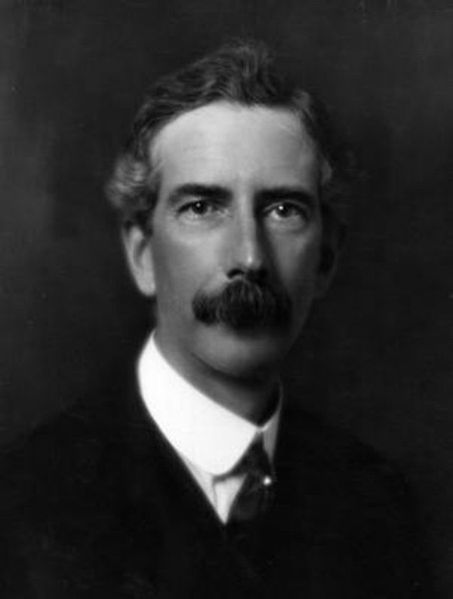<Back to Index>
- Astrophysicist Charles Greeley Abbot, 1872
- Painter Mikhail Vasilyevich Nesterov, 1862
- French Revolutionary Pierre Victurnien Vergniaud, 1753
PAGE SPONSOR

Charles Greeley Abbot (May 31, 1872 – December 17, 1973) was an American astrophysicist, astronomer and Secretary of the Smithsonian Institution. He was born in Wilton, New Hampshire.
Abbot graduated from Phillips Academy in 1891 and MIT in 1894, with a degree in chemical physics. Samuel Pierpont Langley was looking for an assistant at the Smithsonian Astrophysical Observatory (SAO), and hired Abbot in 1895 because of his skill at laboratory work, despite his lack of experience in astronomy.
Langley focused on aeronautics experiments, while Abbot became acting director of the SAO in 1896. When Langley died in 1906, Abbot succeeded him as director (in 1907), and Charles Walcott became Smithsonian Secretary. Abbot, recognizing that the solar constant was badly approximated, proposed a more accurate value of 1.93 cal/cm²/min for the solar constant (the modern value is measured in watts per square meter).
Abbot was secretary of the Smithsonian Institution from 1928 to 1944. Responsible for the observatory's solar observations, he designed and built devices for measuring solar radiation, including a greatly improved bolometer which measured the Sun's inner corona at the 1900 solar eclipse in Wadesboro, North Carolina.
In 1918 Abbot became Assistant Secretary of the Smithsonian. He succeeded Walcott as Secretary in 1928, and guided the Institution through the turbulent years of the Great Depression and World War II.
From 1941 he was an original standing committee member of the Foundation for the Study of Cycles.
Abbot retired as both SAO director and Smithsonian Secretary in 1944, being the first Smithsonian Secretary not to die in office. He delegated the National Museum largely to his Assistant Secretary, Alexander Wetmore, who succeeded him as Secretary in 1944.
Abbot won the Henry Draper Medal of the National Academy of Sciences in 1910 and the Rumford Prize of the American Academy of Arts and Sciences in 1915. He was elected Fellow of the American Academy of Arts and Sciences in 1921.
Abbot pushed to provide funding to
rocket pioneer Robert Goddard during World War I, but to his disappointment this was canceled after the end of the war.
Abbot, like Langley, pursued the idea that the Sun's radiation was variable and that this variability could influence weather. He persistently searched for variations in the solar constant, hoping that these could be used for weather forecasting, and believed that he had detected such variations, on the order of 3% to 10%. However, modern measurements of greater accuracy indicate that such variability does not occur, apart from tiny variations due to sunspots and faculae.
He completed the mapping of the infrared solar spectrum and carried out systematic studies of variation in solar radiation, its relation to the sunspot cycle, and its effect on weather variation. He also studied the nature of atmospheric transmission and absorption. Abbot perfected various standardised instruments now widely used for measuring the sun's heat, and he invented devices utilizing solar energy.
In 1938, Abbot made an anonymous contribution to the Journal of Parapsychology detailing his studies into clairvoyance. In 1949, he published a replication of his findings in the same journal under his own name.
The crater Abbot on the Moon is named after him; an exception was made and it was named for him while he was still alive. He died in Washington D.C..